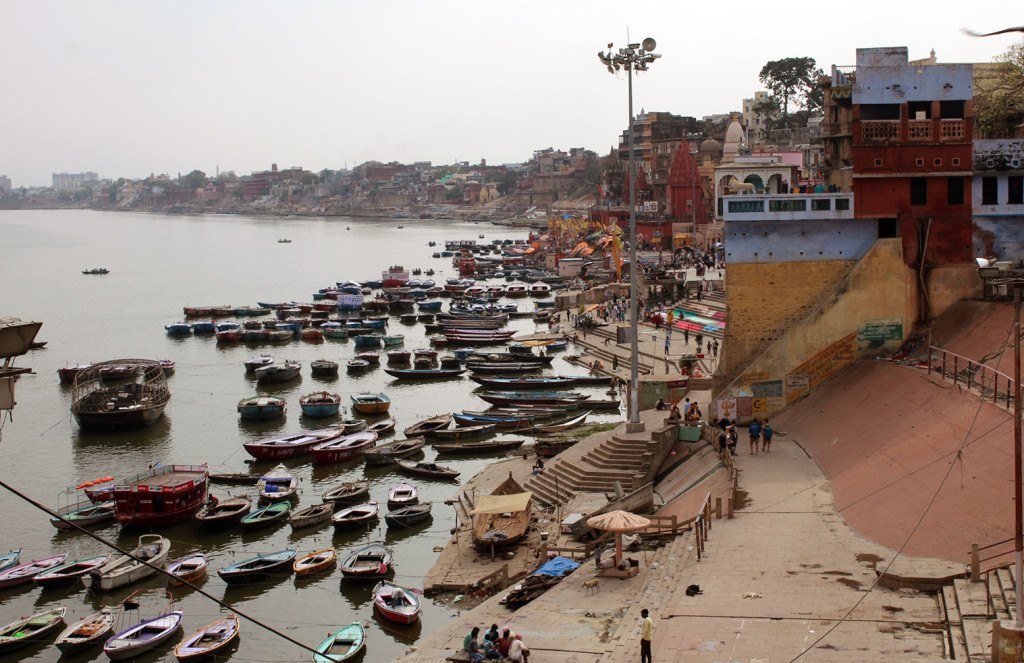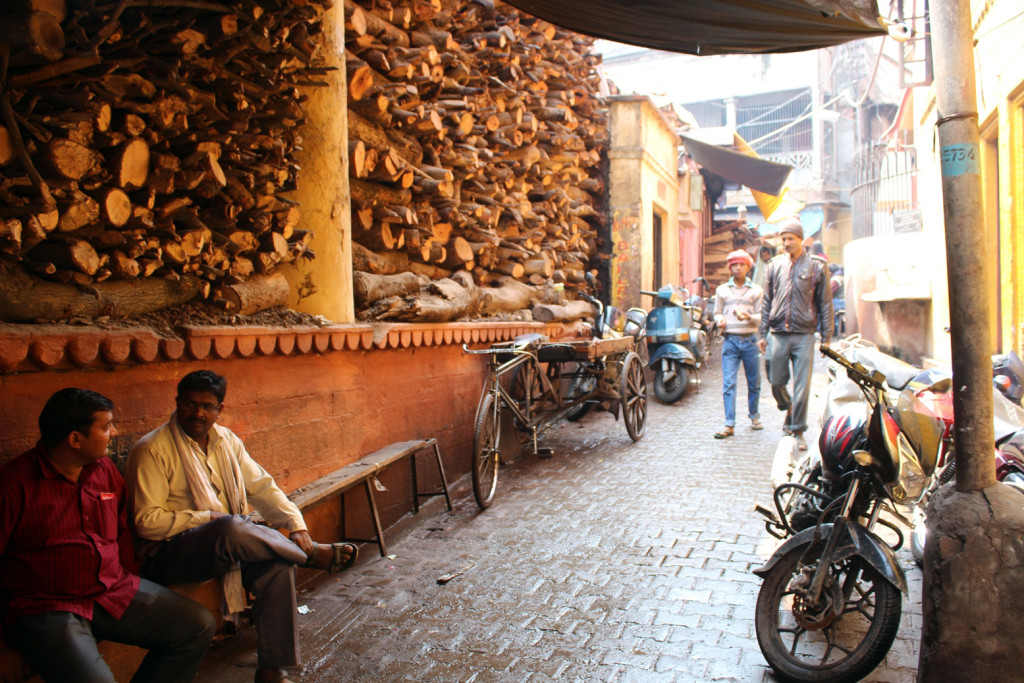Next to slowly flowing river Ganges, inhabited for over 3000 years; the holy city Varanasi. The city of Shiva, god of destruction, those who died here and ashes of the bodies of whom mix with the river is believed to be freed from the circle of life, whose souls are liberated.
The city, bringing Hindus from all around India, coming here for pilgrimage or to join the cremation ceremony of their relatives, and travellers from all around the world together; is a labyrinth consisted of narrow streets in which it is hardly possible for a cow and a human to walk side by side. Hundreds of temples in this labyrinth; some of them are magnificent structures; some of them are just a small hole on a wall near the road.
Abundance of temples makes praying daily life itself. Hundreds of old people settle here and wait for the death, as it is believed if someone’s cremation takes place in this city he/she is freed from the circle of life with total absolution. People make long queues in the streets to take vow in temples.
Manikarnika Ghat, one of the tens of “ghats” next to the river, is used only for cremation, while people are gathering in Dashashwamedh Ghat ever night at 7 for “Puja” ceremony. In some of the ghats there is music in the evening; it is possible to run into a great Indian Classical Music concert if you are lucky.
We feel something different in Varanasi since the first day we arrived. We breathe the ashes flitting around while watching the cremation. There is not a smile on people’s faces. Probably it is not easy in such a place where hundreds of people are cremated every day. Also tourists aren’t always welcomed. Especially if you try to take a photograph while watching the cremation in Manikarnika Ghat, there is a probability of breaking your camera; it is strictly forbidden to take photographs around this ghat.
In the second day, we meet our friend Selçuk, with whom we met two times while travelling in Turkey, in front of a ghat next to the river. In several days we spent together in Varanas, we explore the streets together and try “special lassi”. Lassi is a beverage made from yoghurt and very common in India. Salty Lassi tastes like Ayran, the one with fruits is also very delicious.
When we are tired of narrow streets, we pass through a number of small temples and reach our guesthouse to take a rest at the roof top. Suraj Guesthouse is close to Lalita Ghat. It was an interesting experience to watch Varanasi, its ghats and Ganges from the roof top of an old temple, where we can go by jumping over a wall on the rooftop of the guesthouse. It is also possible to make camp there.
Varanasi is also a suitable place to take an instrument or a yoga course. You can live there for a long time by finding a cheap room for 200 Rs (3 $) per day (Rajasthan Guesthouse for example) and eating for cheap in local restaurants.
After five days we spent in Varanasi, captured by its mystery, we go to Darjeeling by a night train to explore northeast India. Everything changes as if we are not in India anymore.
Darjeeling, which is at the western border of Nepal, is a region inhabited by Gorkhas migrated from Nepal about 500 years ago. We run into writings of “Gorkhaland” everywhere. They had armed struggle for a while to be independent for a while, but now they look like they renounced. Culturally, this region is closer to Nepal than India.
While walking in steep streets, we are looking for the writings and paintings on the walls pointing out for violence against women. Women’s existence in every part of life on the streets takes our attention. Most of the street sellers, shop keepers and the police are women. They look free with their behaviors and clothing.
The square at a high point of Darjeeling with a street market and a big temple next to it is also the center of the town. Accommodation is mostly expensive, cheap guesthouses are in the streets around the square.
The ropeway passing over the tea gardens on steep hills, the “toy train” running by steam power and trekking in Singalila National Park are the most important tourist activities of Darjeeling. As it is very expensive to join a tour by the toy train we only try the ropeway. We didn’t get to Singalila National Park as hiring a guide and entrance fees are also expensive.
Slant eyed and cheerful people share their warmth with us, but the cold weather freezes us. Our dream of going up north to explore Sikkim also collapsed as we got sick. Northeast states of India have beautiful nature with a different culture in each; all worth exploring. But we decide to leave India as we couldn’t recover and as we wanted to be in Himalayas in Spring.
After getting better, we hit the road towards Nepal, together with Sam and Hannah, with whom we shared our time in Darjeeling. We say goodbye to India, where we spent 5 months, and go to the roof of the earth, to Nepal on foothills of Himalayas by passing Kakarbhitta border on foot.












